George I Worksheets
Do you want to save dozens of hours in time? Get your evenings and weekends back? Be able to teach about George I to your students?
Our worksheet bundle includes a fact file and printable worksheets and student activities. Perfect for both the classroom and homeschooling!
Resource Examples
Click any of the example images below to view a larger version.
Fact File
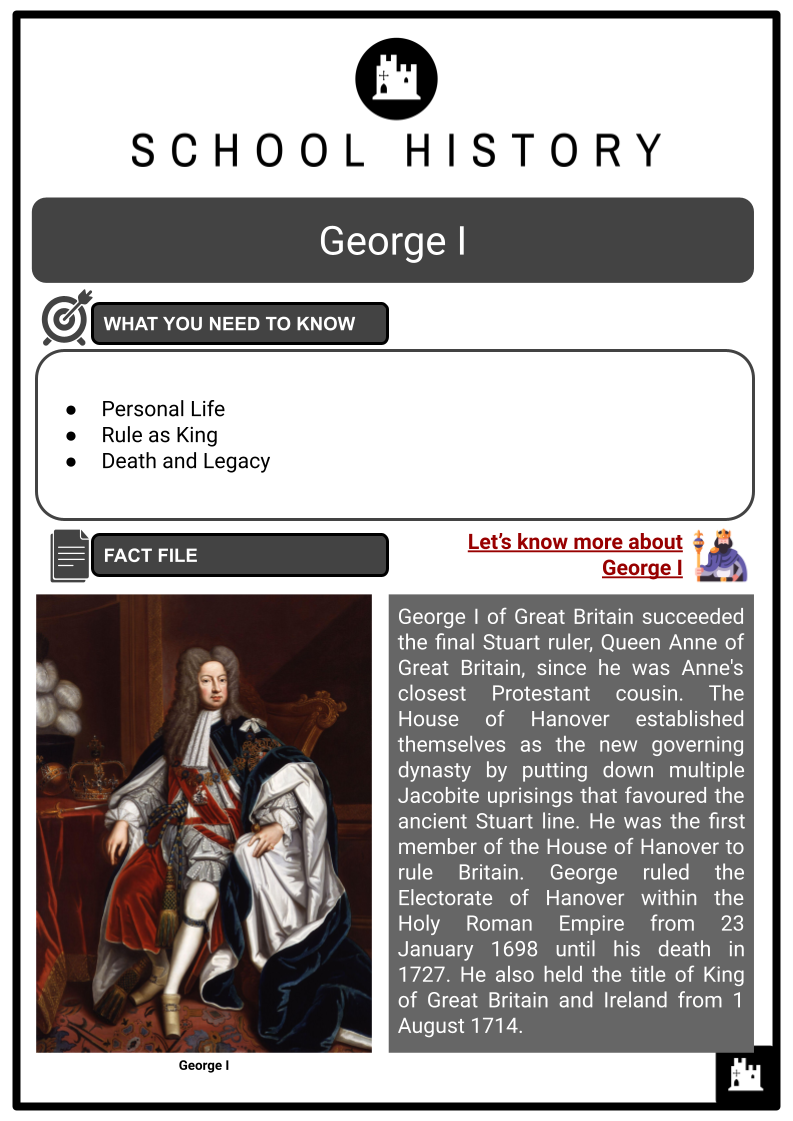
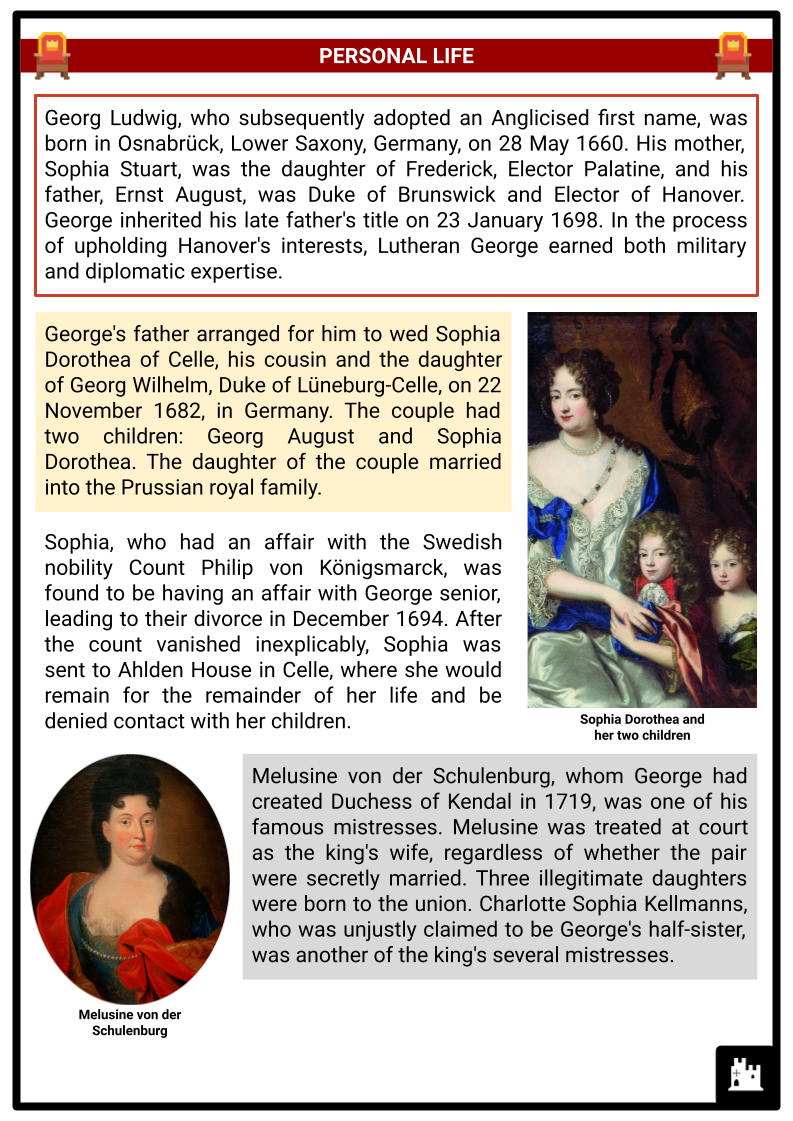
Student Activities
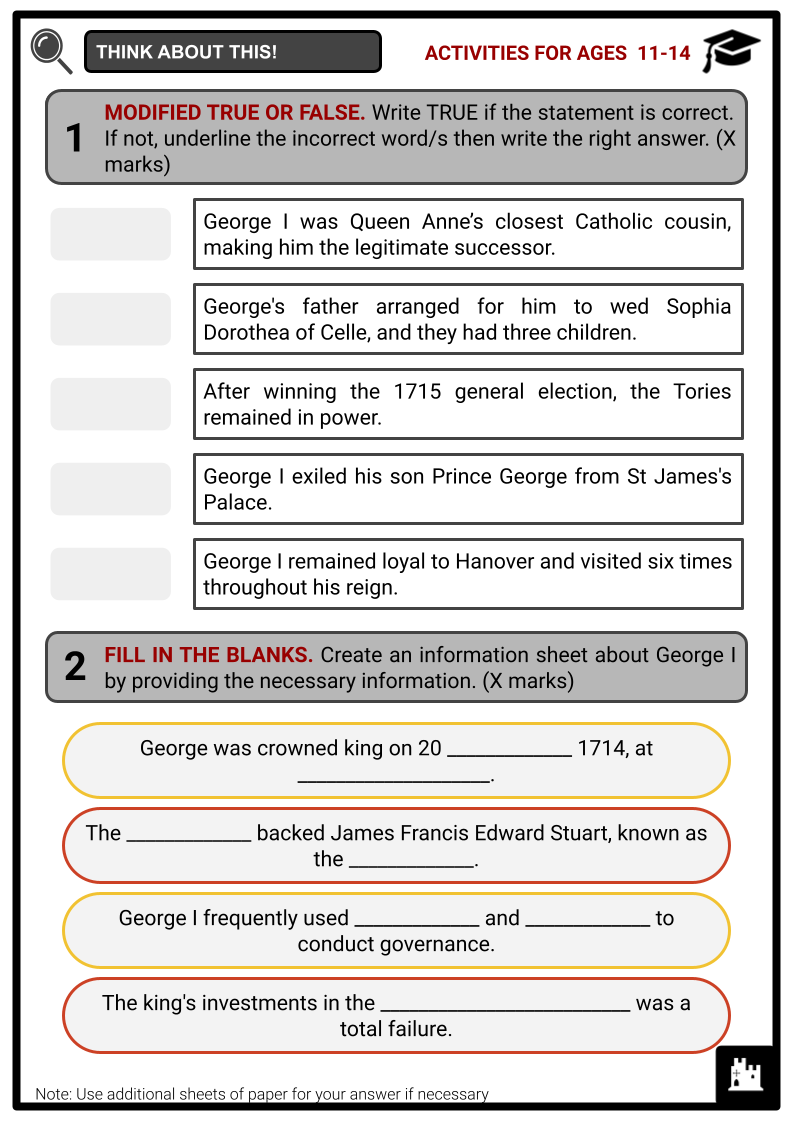
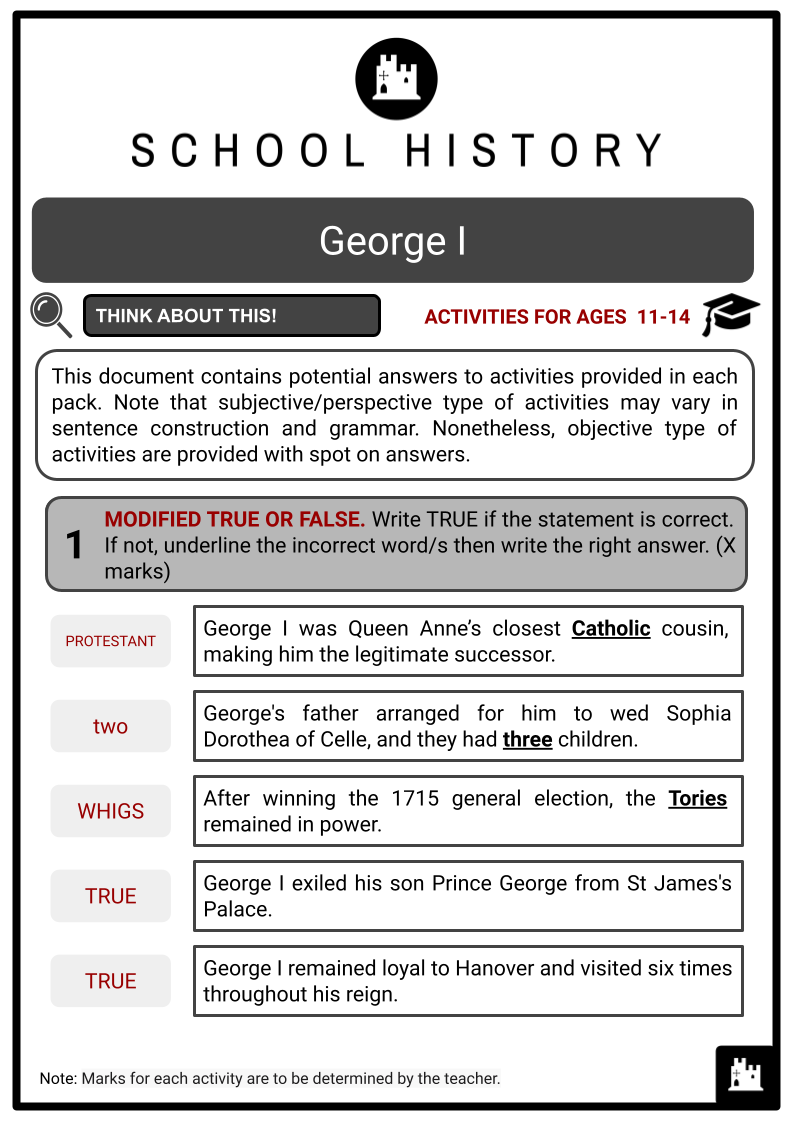
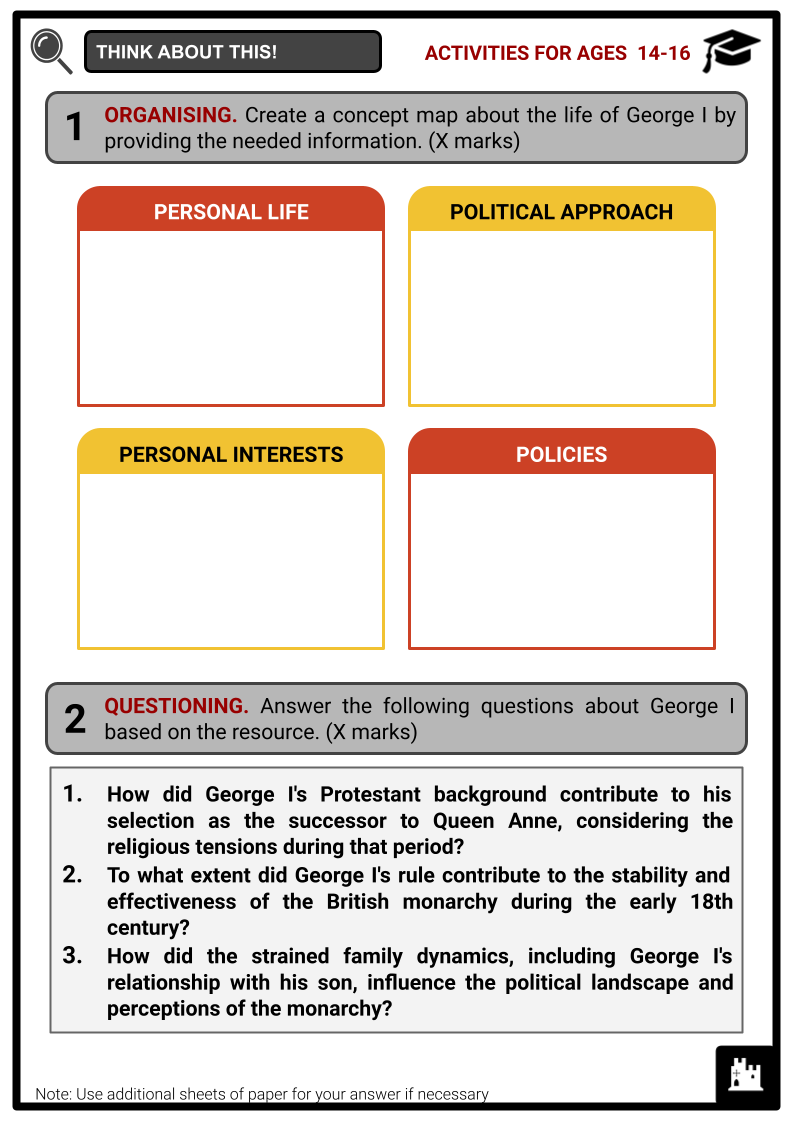
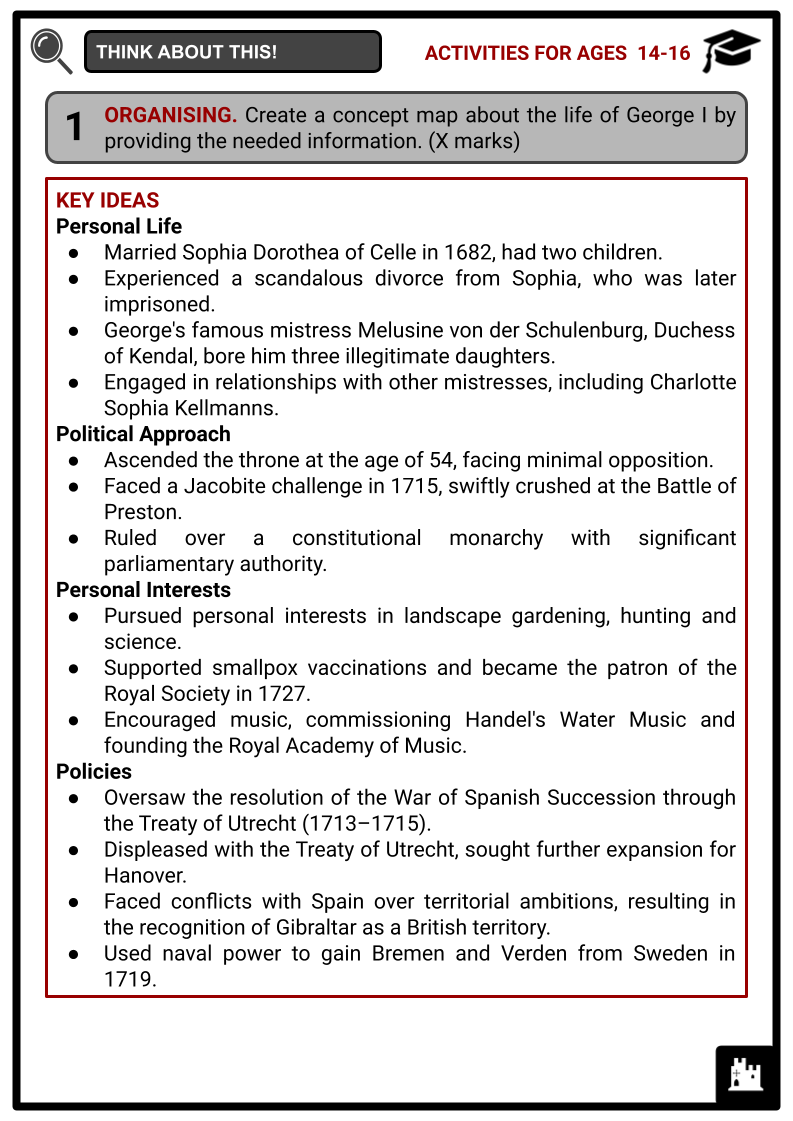
Summary
- Personal Life
- Rule as King
- Death and Legacy
Key Facts And Information
Let’s know more about George I!
George I of Great Britain succeeded the final Stuart ruler, Queen Anne of Great Britain, since he was Anne's closest Protestant cousin. The House of Hanover established themselves as the new governing dynasty by putting down multiple Jacobite uprisings that favoured the ancient Stuart line. He was the first member of the House of Hanover to rule Britain. George ruled the Electorate of Hanover within the Holy Roman Empire from 23 January 1698 until his death in 1727. He also held the title of King of Great Britain and Ireland from 1 August 1714.
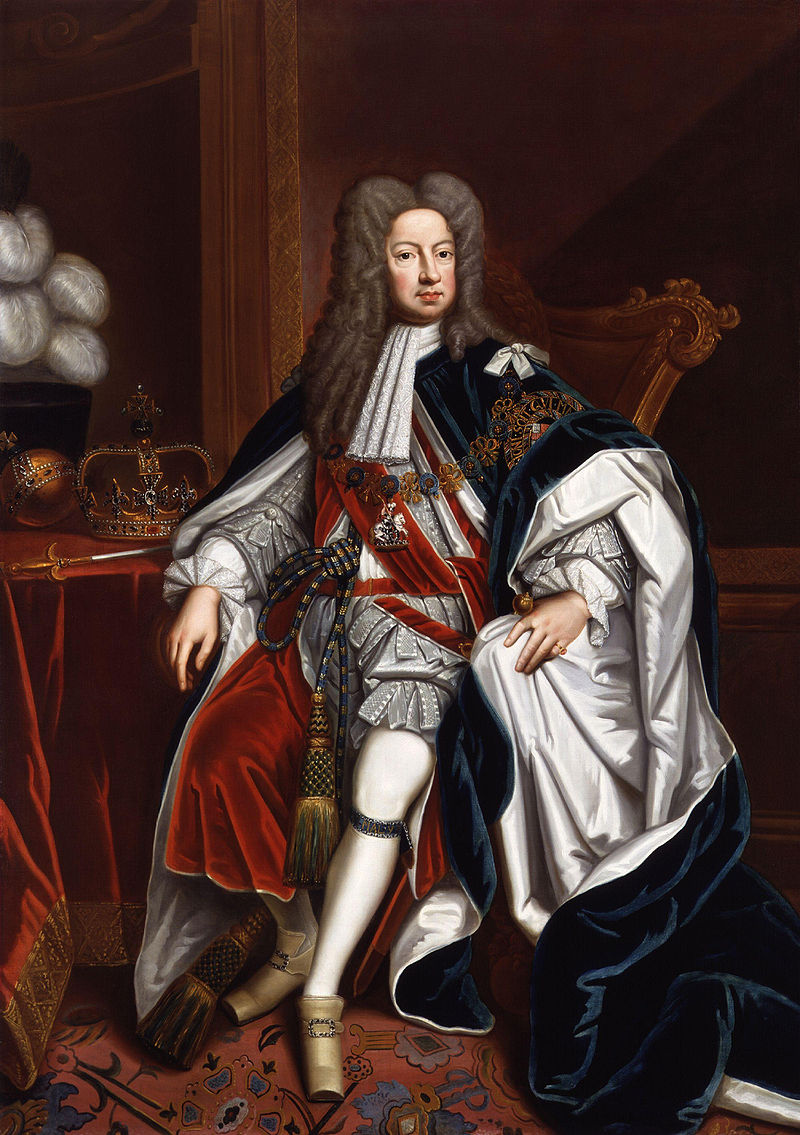
PERSONAL LIFE
- Georg Ludwig, who subsequently adopted an Anglicised first name, was born in Osnabrück, Lower Saxony, Germany, on 28 May 1660. His mother, Sophia Stuart, was the daughter of Frederick, Elector Palatine, and his father, Ernst August, was Duke of Brunswick and Elector of Hanover. George inherited his late father's title on 23 January 1698. In the process of upholding Hanover's interests, Lutheran George earned both military and diplomatic expertise.
- George's father arranged for him to wed Sophia Dorothea of Celle, his cousin and the daughter of Georg Wilhelm, Duke of Lüneburg-Celle, on 22 November 1682, in Germany. The couple had two children: Georg August and Sophia Dorothea. The daughter of the couple married into the Prussian royal family.
- Sophia, who had an affair with the Swedish nobility Count Philip von Königsmarck, was found to be having an affair with George senior, leading to their divorce in December 1694. After the count vanished inexplicably, Sophia was sent to Ahlden House in Celle, where she would remain for the remainder of her life and be denied contact with her children.
- Melusine von der Schulenburg, whom George had created Duchess of Kendal in 1719, was one of his famous mistresses. Melusine was treated at court as the king's wife, regardless of whether the pair were secretly married. Three illegitimate daughters were born to the union. Charlotte Sophia Kellmanns, who was unjustly claimed to be George's half-sister, was another of the king's several mistresses.
RULE AS KING
- After just one visit to England (in around 1680), George became King George I of Great Britain and Ireland on 1 August 1714. At the age of 54, he became the oldest king or queen to ascend to the throne. This transition between the royal families was met with little organised or immediate opposition. George was crowned on 20 October 1714, at Westminster Abbey. Nevertheless, the next year there would be a challenge to his monarchy.
Jacobite Rebellions
- Despite the official choice or the ban on a Catholic taking the throne, George's ascension was seriously challenged in 1715. The group known as the Jacobites backed James Francis Edward Stuart, the Old Pretender, who was James II's exiled son's heir apparent to the British throne. The future king refused to give up his Catholic faith in order to win over more potential followers. Furthermore, he wasn't the most charismatic of leaders and, for once, a war-weary France wasn't willing to get involved in British issues.
- As a result of these flaws, the Jacobite Rising was a flop, and it was put down in Scotland at the Battle of Preston on 14 November 1715, before the Old Pretender ever arrived.
- After suffering through a miserable Scottish winter for six weeks, the Old Pretender departed to Continental Europe.
- There were two further Jacobite plans that failed, one in 1719 with Spanish help and the other in 1722 with the improbable goal of seizing control of London. The causes of the failure were bad weather and betrayal, respectively.
Political Landscape
- In Parliament, the Whigs and the Tories were the two dominant parties. Rich landowners, corporate entrepreneurs and financial speculators made up the Whig coalition. They only wanted a very limited monarchy since they were ardent supporters of legislative authority. The majority of the country aristocracy who supported the two main traditions of the church and monarchy made up the more conservative Tories.
- The king then presided over a constitutional monarchy in which Parliament had significant authority, notably over taxes. No monarch could dismiss a declaration of war, as had frequently occurred under the Stuart rulers. Only Parliament could do so. Despite his bad English, George was fluent in numerous other languages, and as such he frequently used French and Latin to conduct governance in his new kingdom.
- The monarch chose his advisers from both sides. However, certain Tory members of parliament, most notably the Earl of Mar, were publicly accused of being Jacobite sympathisers.
- Whig media consistently portrayed their rivals as 'Jacobites' as opposed to 'Tories'.
- Because of this prejudice, those who aspired to positions of authority eventually decided to separate themselves from the defunct Conservatives and join the Whig party.
- After winning the 1715 general election, the Whigs remained in power for the ensuing 100 years.
Foreign Policies
- The War of Spanish Succession was resolved in 1713–1715 by the Treaty of Utrecht, which also brought about the expansion of British possessions in North America (Newfoundland and Nova Scotia) and a profitable monopoly contract for the transportation of slaves from Africa to Spanish Empire provinces.
- King George was unsatisfied because he had thought that the war against France would go on and expand Hanover's lands.
- The Tory administration signed the pact, and the monarch never forgot it. Britain and Spain fought each other from 1718 to 1719 over Spain's territorial ambitions in the Mediterranean.
- After a Spanish fleet was destroyed, the two competing nations engaged in yet another battle in 1726 when Spain attempted to but was unable to regain Gibraltar.
- In 1729, a peace treaty was concluded, recognising Gibraltar as a British territory and allowing trade between the British and the Spanish American possessions.
- George was eager to exploit his newfound realm to increase Hanover's economy. One strategy was to seize Bremen and Verden – both of which Sweden was closely pursuing – by using the formidable Royal Navy. Hanover, a landlocked nation, would gain vital access to the North Sea with their takeover. The tactic, which amounted to little more than threatening naval involvement, worked, and Hanover was able to capture the two provinces in 1719 through a peace deal.
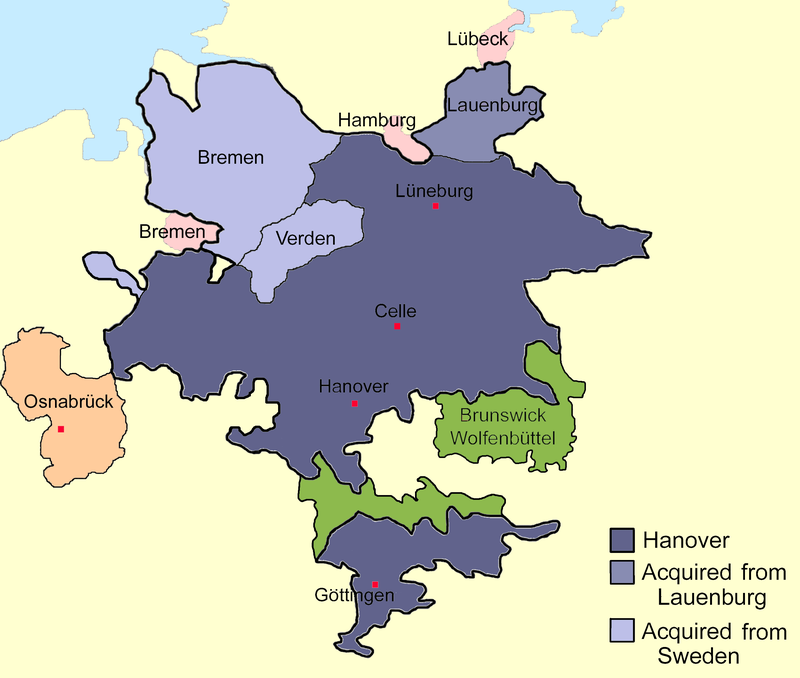
- The king's investments in the South Sea Bubble in 1720–1721, when a stock firm betting on the potential future riches from the slave traffic between Africa and the Americas collapsed spectacularly, was a considerably less successful overseas enterprise.
DEATH AND LEGACY
- The king remained loyal to Hanover and visited six times throughout his reign, but these prolonged visits did not endear him to the English nobility, who saw him as a somewhat dull outsider with little passion for ruling Britain. 'German George' undoubtedly had difficulty winning over the people, but at least he had brought the House of Hanover to a steady and safe beginning to their lengthy reign of the British Crown.
- The following are considered some of the most notable parts of the legacy of George I:
- Took a more distant rule approach from 1721, relying on capable Prime Minister Walpole.
- Pursued personal interests in landscape gardening, hunting and science.
- Supported smallpox vaccinations and became the Royal Society's patron in 1727.
- Encouraged music, commissioning Handel's Water Music and establishing the Royal Academy of Music.
- Promoted Georgian architectural style, emphasising symmetry and proportion.
- Influenced the development of clean-looking ceramics, curvaceous furniture and rich interior design.
- Georgian architectural style extended to 50 new churches, including St Anne's Limehouse.
- Cultural impact seen in literature with works like Robinson Crusoe, Moll Flanders, and Gulliver's Travels.
- In 1717, George and his son and heir famously fell out. The Duke of Newcastle, who was chosen to be the godfather for the king's child, mistook Prince George's christening for a challenge to a fight, which sparked the outburst. Since King George had divorced and treated the previous queen so unfairly, there may have been a long-simmering hate between the two that culminated in this regrettable incident. Following the highly publicised argument, the king exiled his heir from St James's Palace and even assumed custody of his grandchildren, allowing them to see their parents just once a week.
- Obesity and gout combined to cause frequent fainting episodes that plagued the ageing monarch's health in his last years. On 11 June 1727, at Osnabrück, King George passed away at the age of 67 due to a heart attack or stroke. Before being relocated to Herrenhausen Palace, the Hanover Electors' holiday home, he was laid to rest in Leineschloss Church in Hanover.
- George II was his only son, and although he was slightly more well-liked, he was just as dull as his father. In addition, he had to deal with a Jacobite uprising, which occurred in 1745 and was centred on 'Bonnie' Prince Charlie, the son of the Old Pretender, Charles Edward Stuart. Charles's charm helped this insurrection get a lot of traction, but it was finally put down, just like all the others. The Battle of Culloden in 1746 marked the end of the Stuart cause. Outside of America and Europe, there were a number of failed foreign conflicts, but there were also victories in Canada and India.
Frequently Asked Questions
- Who was George I of Great Britain?
George I was the first monarch of the House of Hanover and the King of Great Britain and Ireland from 1714 to 1727.
- How did George I become the King of Great Britain?
George I became King of Great Britain through the Act of Settlement 1701, which designated him as the successor due to his Protestant lineage after the death of Queen Anne.
- What is the significance of George I in British history?
George I is significant for being the House of Hanover's first monarch and establishing the Hanoverian succession in Britain. His reign marked the beginning of a new era.
